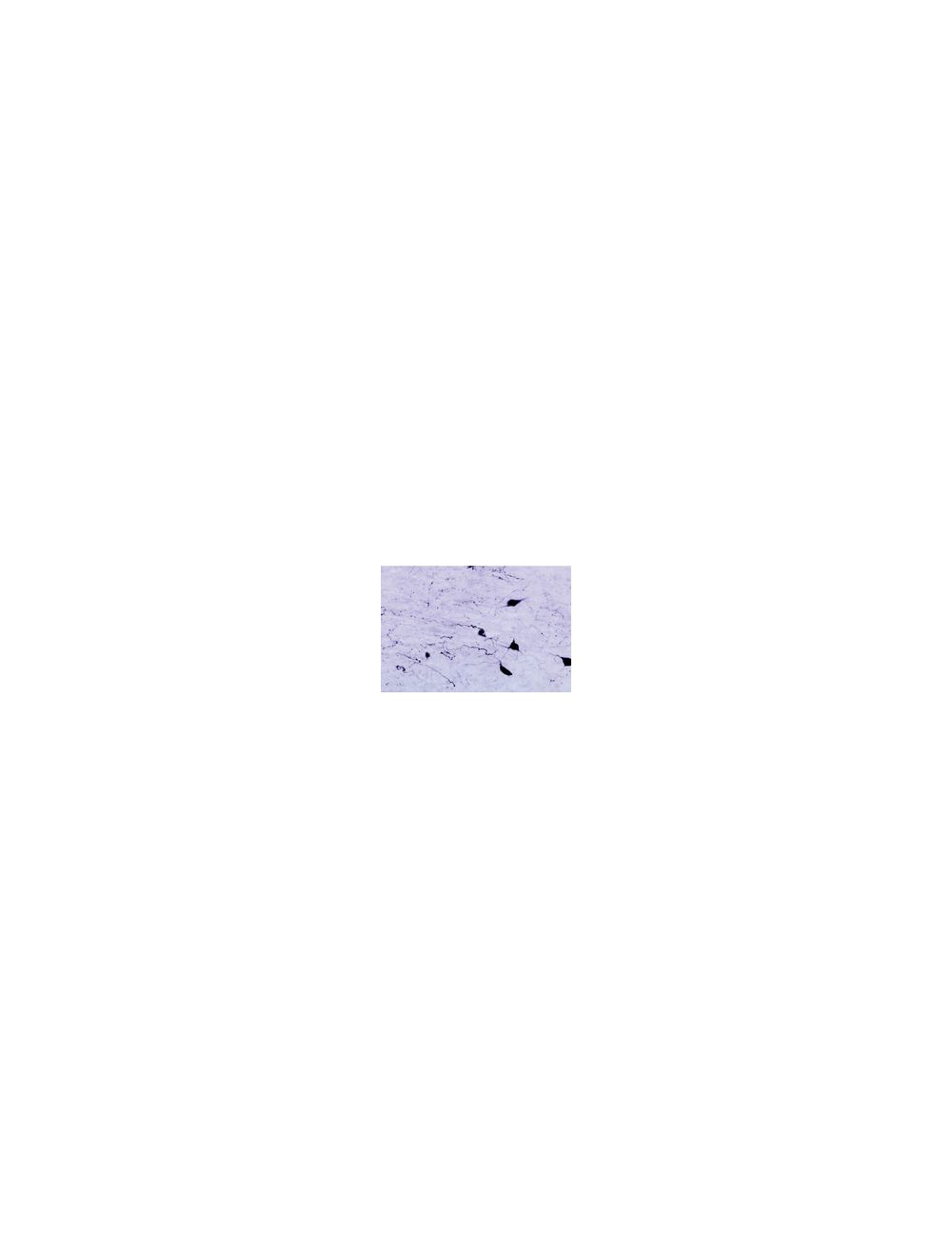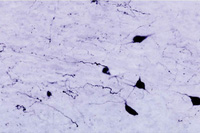Orexin-A, Rabbit Polyclonal Antibody
As low as
US$317.00
Only %1 left
Catalog Number
R-104
- Product Name Orexin-A, Rabbit Polyclonal Antibody
- Product Description Rabbit anti-Orexin-A Polyclonal Antibody (Unconjugated), suitable for IHC-Frozen.
- Alternative Names Orexin-A; Hypocretin-1; Hcrt1
- Application(s) IHC-Frozen
- Antibody Host Rabbit
- Antibody Type Polyclonal
- Specificity The specificity for this antiserum has been confirmed by immunohistochemistry on rat brain and the results reflect the current literature. This antibody is known to react with rat Orexin A.
- Species Reactivity Bovine, Rat
- Immunogen Description A synthetic peptide (CRLYELLHGAGNHAAGILTL) as part of Bovine Orexin A (aa: 14-33) conjugated to KLH has been used as the immunogen.
- Conjugate Unconjugated
- Purity Description Whole serum
- Regulatory Status For research use only.
Product Info
- Product Description Rabbit anti-Orexin-A Polyclonal Antibody (Unconjugated), suitable for IHC-Frozen.
- Application(s) IHC-Frozen
- Application Details IHC. This is a superb antiserum for immunohistochemistry on Orexin A containing neurons exhibiting intense labelling of neurons with very low back ground. A dilution of 1:1000 to 1:2000 is recommended for this application. Biosensis recommends optimal dilutions/concentrations should be determined by the end user.
- Target Orexin-A
- Specificity The specificity for this antiserum has been confirmed by immunohistochemistry on rat brain and the results reflect the current literature. This antibody is known to react with rat Orexin A.
- Target Host Species Bovine
- Species Reactivity Bovine, Rat
- Antibody Host Rabbit
- Antibody Type Polyclonal
- Antibody Isotype Mixed
- Conjugate Unconjugated
- Immunogen Description A synthetic peptide (CRLYELLHGAGNHAAGILTL) as part of Bovine Orexin A (aa: 14-33) conjugated to KLH has been used as the immunogen.
- Purity Description Whole serum
- Format Lyophilized
- Reconstitution Instructions Spin vial briefly before opening. Reconstitute in 100 µL sterile-filtered, ultrapure water. Centrifuge to remove any insoluble material.
- Storage Instructions After reconstitution keep aliquots at -20°C for a higher stability, and at 2-8°C with an appropriate antibacterial agent. Glycerol (1:1) may be added for an additional stability. Avoid repetitive freeze/thaw cycles.
- Batch Number Please see item label.
- Expiration Date 12 months after date of receipt (unopened vial).
- Alternative Names Orexin-A; Hypocretin-1; Hcrt1
- Uniprot Number P56717
- Uniprot Number/Name P56717 (OREX_BOVIN)
- Scientific Background FUNCTION: Neuropeptides that play a significant role in the regulation of food intake and sleep-wakefulness, possibly by coordinating the complex behavioral and physiologic responses of these complementary homeostatic functions. A broader role in the homeostatic regulation of energy metabolism, autonomic function, hormonal balance and the regulation of body fluids, is also suggested. Orexin-A binds to both OX1R and OX2R with a high affinity, whereas orexin-B binds only to OX2R with a similar high affinity. SUBCELLULAR LOCATION: Endoplasmic reticulum; rough endoplasmic reticulum. Associated with perikaryal rough endoplasmic reticulum as well as cytoplasmic large granular vesicles at synapses. SIMILARITY: Belongs to the orexin family.
- Shipping Temperature 25°C (ambient)
- UNSPSC CODE 41116161
- Regulatory Status For research use only.
Specifications
-
Specific References
Kruger J.L. et al (2010) Cellular location and major terminal networks of the orexinergic system in the brains of five microchiropteran species. J Chem Neuroanat. 2010 Nov;40(3):256-62.
Gaykema R.P. et al (2009) Lipopolysaccharide challenge-induced suppression of Fos in hypothalamic orexin neurons: their potential role in sickness behavior.Brain Behav Immun. 2009 Oct;23(7):926-30.
Lee H.S. et al (2005) Retrograde study of hypocretin-1 (orexin-A) projections to subdivisions of the dorsal raphe nucleus in the rat. Brain Res. 2005 Oct 12;1059(1):35-45.
Yao S.T. et al (2005) Water deprivation increases the expression of neuronal nitric oxide synthase (nNOS) but not orexin-A in the lateral hypothalamic area of the rat. J Comp Neurol. 2005 Sep 19;490(2):180-93.
- General References Nambu, T. et al. (1999) Brain Research. 827: 243-60

 1800 605-5127
1800 605-5127 +61 (0)8 8352 7711
+61 (0)8 8352 7711


